The following is a new interview I did recently for Jon Liebman’s For Bass Players Only magazine.
JL: Tell me about your musical upbringing.
BT: There was a piano in the house and it came as a great surprise to me when I started hitting the notes that a tune didn’t come out at all, just a racket. After all, I was only doing what I’d seen everyone else do when playing the piano. But my mother had a good ear for a tune, and picked it up very quickly without any lessons. My father, on the other hand, spent his childhood studying to be a classical violinist; but he had to give it up to go in the Army. Later he only ever played it occasionally.
I had no formal music training myself, but as a kid I listened to Radio Luxembourg under the bed sheets. It was the only pop music station at the time. They had a show from the Cavern in Liverpool, so I was actually listening to bands that would later become famous on the coat-tails of the Beatles. There were some good bass players; in particular, I remember Johnny Gustafson of the Merseybeats.
JL: How did you become a bass player?
BT: One night, during the days of the great British R&B boom, I sat in with a local band called The Tremors. I played a few tunes on harmonica, like “Got My Mojo Working” and some others, and they asked me to join as harmonica player. When the regular bass player failed to turn up for the gig one night, his bass (a blond Epiphone Rivoli) was handed to me and I had to wing it.
At that point I didn’t own a bass myself, apart from one I’d tried to make using telephone parts as a pickup and a Spanish guitar bridge. It even had an eleven-note octave on it because, somewhere along the way, I’d counted wrong! Anyway, I must’ve been cut out to play the bass, as I kept the bass-playing job with the Tremors.
Once I’d been elected bass player, I practiced every waking hour, mostly copying parts from records. I played a minimum of nine hours a day. I played along with the TV and even took the bass to bed. One of the first parts I learnt was “Green Onions” because it was an easy three-note riff but, more to the point, it was probably teaching me how to play a groove. Paul McCartney and James Jamerson’s bass lines were too complex for me at that time, so I stuck to riffy R&B parts, graduating from Bill Wyman, via Paul Samwell-Smith of the Yardbirds, to being able to play along with Jack Bruce’s parts on the first Cream album, after about a year’s practice.
I could play most riffs after hearing them once and it was agreed by my school buddies that I had the makings of a good bass player. But I’m a firm believer in the repetition school of learning — the well-known “10,000 hours” theory. I certainly found the same to be true when I later took up kung fu training.
I later joined another local band, The Roadrunners, which had Mick Moody (later of Whitesnake) on guitar. I took over the Roadrunners’ bass playing duties from a guy called Paul Rodgers, who we thought would make a better singer! That was the band we all turned professional with.
JL: How did you get the gig with Elvis Costello?
BT: I answered the proverbial ad in Melody Maker the musician’s paper at the time, which had all the Situations Vacant or Wanted pages where bands would recruit. The ads would be something like: “Mindbeast seeks heavy metal guitarist. Must have own transport and long hair. No Timewasters” .
In my case, the ad I replied to was for a bass player for a “rocking pop combo”. I rang the number on the ad and a girl answered, “Stiff Records.” As she was taking my details, I heard a voice in the background (later confirmed to be EC) saying, “Ask him who he likes.”
“What bands do you like?” the girl said.
“The Rumour and Steely Dan,” I replied.
“Get rid of him,” the voice said.
“No, I think you should give him a chance,” said the girl.
An audition was scheduled in Putney for the end of the week. Being sneaky — or resourceful — I went out and bought some EC records and learnt the bass parts. I’d already done quite a bit of session work by this point, so it wasn’t too tricky. At the audition, though, I made like I was hearing the songs for the first time and doing a really good job of learning them. In the end, I was offered the job, despite his disapproval of my flared trousers!
It’s just as well I got the job; otherwise there’d have been no Attractions. EC was set on calling the band the Sticky Valentines (ugh!) rather than the more Motown-sounding Attractions we persuaded him to adopt. Come to think of it, I must’ve been on a roll that day, as I also came up with Steve Nieve’s name. And it wasn’t only a gig with the Attractions I got that day either. I ended up being married for twelve years to the girl who’d answered the phone.
JL: You were with Elvis for a long time. What can you share with me about that experience?
BT: Where do I start? Have you read War and Peace?! It went in phases. The first few years were probably the best, all round. In the beginning, it was a tight unit. We roomed together — me with EC and Steve with Pete. That’s when we did our best body of work as a band and what most people would honestly think of as EC’s best body of writing. I think we had only five days off in the first two years. We were running like a well-oiled machine, so much so that we recorded seven tracks for This Year’s Model (which became a #1 album) in one afternoon. Looking back, I’m quite surprised at the consistency of the playing and material from that period. There aren’t many bass parts from This Year’s Model through to Punch the Clock that cause me any real embarrassment.
But gradually the Spinal Tap clichés set in: the WAGs chipping in, self-indulgence, etc, then a period of forgiveness and rededication; eventually, though, the old dysfunctions resurfaced. Though since it’s the same band now, only minus me, it would appear that they have learned to manage quite happily without me — though I suspect some of the fire, creative or otherwise, has diminished.
JL: You must have at least one really good Elvis Costello story … maybe a good road story?
BT: There are quite a lot of them in my book The Big Wheel. Pete was always good value for an anecdote or ten, due to his prodigious capacity for drinking and other recreational aids.
I once came down for breakfast and found him asleep on top of the bar in a tartan suit, even though he didn’t own a tartan suit! He once also fell into a deep sleep on the lawn of a hotel we were staying in and didn’t wake up in the morning, even when the sprinklers came on. He eventually appeared looking somewhat bedraggled.
While we were recording Get Happy in Holland, we were in a hotel a mile or two from the studio. After a late-night recording session, a bit squiffy as usual, Pete and I decided we’d return to the hotel on foot. Only we wouldn’t just totter gently down the road. Rather, we’d pretend that it was in the war and we were members of the resistance, stealthily making our way to the front line through peoples’ back gardens.
At some point in this ill-conceived journey, we stumbled on a club, which was open and still going strong. We went in and found, to our amazement, that the whole venue was full of Dutch women. Of course, it didn’t take me long to figure out we’d stumbled on a lesbian nightclub. But Pete was just a bit more pissed and a bit slower on the uptake. One Dutch girl, resisting the advances of a certain percussionist, said, “But you don’t understand! I like women!”, “Yes,” said Pete, “Yes! And so do I!”
JL: Tell me about the Bruce Thomas Profile Signature Model Bass.
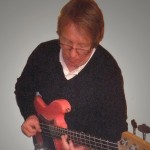 BT: The well-known pink bass I used for twenty years (on and off) with the Attractions was stolen from my car while I was in LA doing some session work after I “left” the band. Though I tried, in vain, to find a suitable replacement, it wasn’t simply a matter of replacing an early 1960s P-bass, as I’d made many modifications to it. I’d reshaped the body and the neck, rewired it and re-sprayed it. I came to the conclusion that I’d have to start again and try to reproduce it from scratch.
BT: The well-known pink bass I used for twenty years (on and off) with the Attractions was stolen from my car while I was in LA doing some session work after I “left” the band. Though I tried, in vain, to find a suitable replacement, it wasn’t simply a matter of replacing an early 1960s P-bass, as I’d made many modifications to it. I’d reshaped the body and the neck, rewired it and re-sprayed it. I came to the conclusion that I’d have to start again and try to reproduce it from scratch.
I’d been a customer and friend of Barry Moorhouse at the Bass Centre in London for many years. When I told him what I was doing, he reckoned that other people would be interested in having a similar bass, so he offered to make a BT signature model bass as part of their new British Bass Masters series.
The name Profile came about as I literally created a new body profile, different to the superficially similar-looking Fender. It was a very timely meeting because Barry was kind enough to provide me several basses to experiment on. I sanded them down till I got the right shape.
The first prototype is the one you will see on my website and on YouTube. They’re being manufactured in the Czech Republic and Korea and will be appearing any time soon. We’re making three models: an entry-level version, a pro model and a top-end customizable version — all of which I’ve worked on and tested and all of which I’d be more than happy to use both for recording and performing.
JL: You’re quite a prolific writer; what’s The Big Wheel all about?
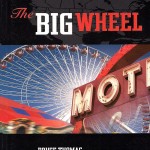 BT: The Big Wheel is a thinly-disguised account of a day in the life of a bass player in a rocking pop combo. It was written after 10 years of touring and recording when quite a bit of road-weariness and tension had taken hold. But it was the sheer repetition of touring that was the key image of the turning wheel. It comes across as humor in adversity I think … that and trying to prick a few bubbles along the way and having a general moan about things.
BT: The Big Wheel is a thinly-disguised account of a day in the life of a bass player in a rocking pop combo. It was written after 10 years of touring and recording when quite a bit of road-weariness and tension had taken hold. But it was the sheer repetition of touring that was the key image of the turning wheel. It comes across as humor in adversity I think … that and trying to prick a few bubbles along the way and having a general moan about things.
I revisit the book on my website, where I’ve pointed out that it wasn’t all as bad as I made it out to be. It was a good band and we did make some good records and did some great shows here and there. And even though we had a fairly hectic schedule, I did get to go round the world four times and have some experiences that money can’t buy. The urban myth is that I was sacked for writing the book, though it’s not true. I was, though, quite happy to encourage the idea as a bit of myth building to help its notoriety … and sales.
JL: How about Fighting Spirit?
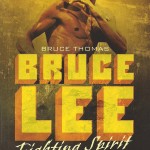 BT: When I lived in west London, I was mugged outside my house one evening, returning home from a late-night shop at the supermarket. I felt like such a fool that I decided to get self-defense or martial art training to make me more aware, as much as give me the skills to tackle any aggression towards me. I was lucky enough to stumble on the guy who turned out to be the best martial arts teacher of his generation, Master Derek Jones, who had a school in Shepherd’s Bush.
BT: When I lived in west London, I was mugged outside my house one evening, returning home from a late-night shop at the supermarket. I felt like such a fool that I decided to get self-defense or martial art training to make me more aware, as much as give me the skills to tackle any aggression towards me. I was lucky enough to stumble on the guy who turned out to be the best martial arts teacher of his generation, Master Derek Jones, who had a school in Shepherd’s Bush.
At this time, I hadn’t even seen a Bruce Lee film and knew very little about him. But it turned out that Derek had learned the wing chun style of kung fu from two of Bruce Lee’s fellow students under Yip Man in Hong Kong. Just as Bruce Lee did, Derek eventually evolved what he’d learned into a more-complete system.
Derek reckoned he’d learned a massive amount from studying Bruce Lee fight scenes from his films and documentaries and had edited all of these onto one tape, which he brought round to my house one day. Once he’d explained so I understood what I was looking at, I knew I had to find out everything I could. So I ended up writing a book about Bruce Lee, not because I was an expert and wanted to teach, but because I wanted to learn everything I could. I reckoned I was in the same position as a reader going to the subject for the first time. In the end it took four years of research, involving interviews and material from over fifteen hundred sources.
JL: Tell me about your new book, Another Roll of the Dice.
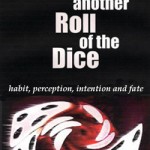 BT: It takes up the same themes as a novel called The Dice Man, which was the best-selling novel of the last fifty years. It’s been called the best novel ever written and also the most dangerous book ever written. It’s basically about the role chance and fate can play in our lives and what happens if we try and increase the chances. The Dice Man was written by aNew York psychiatrist and psychology teacher who was quite shy and started making decisions based on options he chose by rolling dice. He was too shy to chat up girls but he would say to himself, “If I roll a six, I’ll go back and talk to that girl I just saw.” That’s how he met the woman he married. But it’s also the way he decided to leave his wife and child.
BT: It takes up the same themes as a novel called The Dice Man, which was the best-selling novel of the last fifty years. It’s been called the best novel ever written and also the most dangerous book ever written. It’s basically about the role chance and fate can play in our lives and what happens if we try and increase the chances. The Dice Man was written by aNew York psychiatrist and psychology teacher who was quite shy and started making decisions based on options he chose by rolling dice. He was too shy to chat up girls but he would say to himself, “If I roll a six, I’ll go back and talk to that girl I just saw.” That’s how he met the woman he married. But it’s also the way he decided to leave his wife and child.
The themes in The Dice Man are picked up and developed in my upcoming book Another Roll of the Dice. They’re about the relationship between choice and chance and between intention and fate. The book is also about challenging habits and social conditioning and opening up new possibilities. Ultimately, it’s about “who I am”, about identity and how my sense of myself determines what happens to me in life.
JL: What else is keeping you busy these days?
BT: Well, I’m pretty new to being a website administrator and blogger, so “social networking” is the answer to that question. I’ve yet to set up a Facebook page and start tweeting and getting, but we’ll get there. A friend of mine was encouraging me to set up online session work, but to be honest I’d rather have a trip to California. You have to have a break from the computer sometimes!
JL: What does the future hold for you? What else would you like to do that you haven’t accomplished yet?
BT: The immediate future is going downstairs and making avocado on toast for my lunch! My long-term ambition is to get out of life alive! In between, I believe I’ve got a few more good records left in me and a couple more books. There are even a few performances in there, once I get an offer I can’t understand.
Other than that, what I’d like to do that I haven’t accomplished yet is be able to dance like Michael Jackson could, play a solo like Eric Clapton, hit an overhead shot like Wayne Rooney, ride a bike like Bradley Wiggins and duff up Chuck Norris … all before tea-time.
JL: What would you be if you weren’t a bass player?
BT: The obvious answer is a writer, but I do that already. My first job was in an advertising agency as what was then known as a commercial artist and what’s now called a graphic designer. I’d enjoy doing more painting, but only a handful ever makes the grade in that line of work.
I’ve always taken the “Renaissance Man” approach of trying to create a balance between the emotional (music), mental (writing) and the physical (martial art), although I soon found out that they all crossover and only work if you take an integrated approach to any of them.
I’d like to have trained in kung fu full-time for about twenty years and see where that took me. Other than that, I like to get a shot at the job of “Beach Tester” for the Caribbean Tourist Board!
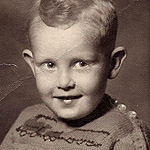

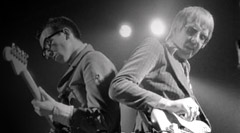
28 Responses to I Never Knew That!